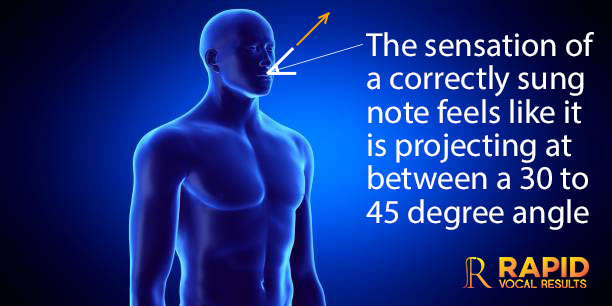Hi everyone, this blog post is going to be short, sharp and insightful.
Our subject for today is the sensations that you should feel when you are singing a note correctly in chest voice and head voice. The reason why we want to focus in on these sensations is that feelings are far more accurate to guarantee the correct placement of a note than just relying on your ears alone. And yet so many singers I’ve met struggle to achieve a functioning level of internal awareness in their voice to identify when muscles are straining or creating tension hurdles that are preventing that singer from being able to perform vocally at their best. Your ears can often play tricks on you and create the false impression that you’re producing a rich, resonating vocal tone. In reality, our audience might be hearing just the opposite!
Let’s dive straight in. For the purpose of starting at the beginning, we’re going to focus on the sensations you should experience when you are correctly singing a “chest voice” note – a vocal sound that is produced in your “chest” register.
For this exercise I want you to sing one pitch in your spoken voice register i.e. the voice register that sounds like your speaking voice. How does it feel to you? Are you experiencing vibrations through the soles of your feet and up through your legs? Did you feel the vibrations from that sound across the top of your chest, or a warm, tickly feeling? If you’re not experiencing vibrations in these areas, or even behind your teeth, chances are that the note that you’re singing is not enjoying optimum placement.
Optimum placement feels like the sound is projecting out of your mouth at an upward 45 degree angle. A correctly sung chest note should have no feeling of strain or tension in your throat and you should experience a feeling of vibration across the top of your chest, through your teeth, across your cheekbones and even down to the soles of your feet. This is telling you that the note is vibrating freely and that you are supporting the production of that note by doing the following things:
- Singing from an open throat position with a wide smile to maintain that open throat
- Optimum larynx position
- Keeping your ribcage expanded around three quarters of the way
- Correct diaphragmatic support
If you are doing these things, you’re creating the correct environment within your body to experience the following sensation, and that is that the note should feel like an out of body sensation that goes over your head. We want to avoid feeling like we have encountered a self-imposed glass ceiling where the note feels like it’s stuck against the roof of our mouth.

The reason that the note feels like it’s going over our head is because the larynx is in the correct position to allow the vocal cords to resonate freely with minimum stress, which feels like the sound is projecting at an upward 45 degree angle. This is due to the four foundations that I’ve mentioned above. Even after years of singing, if you haven’t experienced this type of out of body sensation when you sing a note, it means that you haven’t achieved that optimum placement.
If you’re someone that is not feeling the sensations that we’ve talked about in this post, or feels stress and strain when trying to reach higher notes in your voice, there is a better way to sing. Let’s chat.
Better singing everyone!


So you mentioned at the beginning that you’d tell how it feels if a note is sung correctly in chest and head voice. But if I’m not mistaken, you just explained how it feels in chest voice. What about the head voice?
That’s a great question!
When you sing any note correctly, you should experience freedom of relaxation in your larynx and regardless of whether the note is in chest, head, mixed, or reinforced falsetto. Provided you have the right kind of support and your larynx is in the correct position, the note should feel like it goes over the top of your head and it should be experienced as a fully “round” pitch.
If you sing a note incorrectly for any reason, the note will sound dull and it usually comes with a sensation of being trapped, either under the hard pallet or the soft pallet. These are great tell-tale sounds that you are not singing the note freely and easily.
Happy to chat further if you’re still unsure!
-Paule